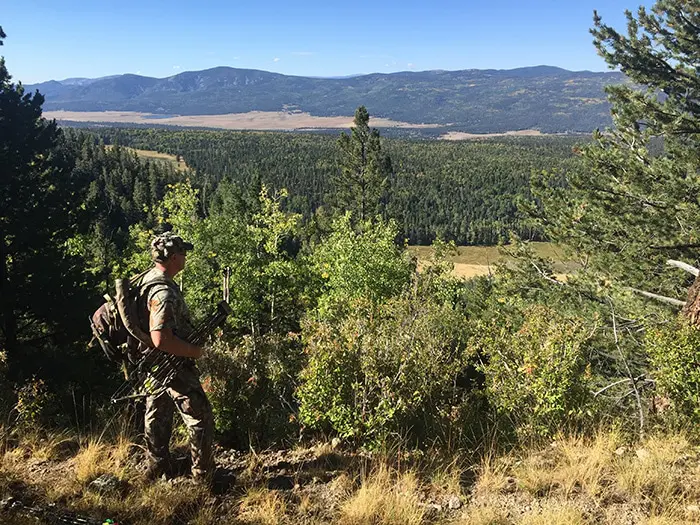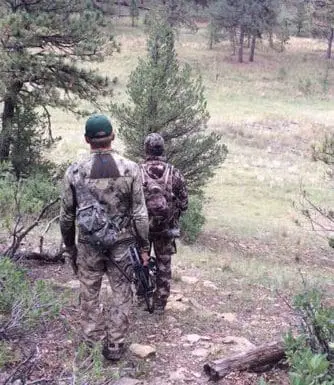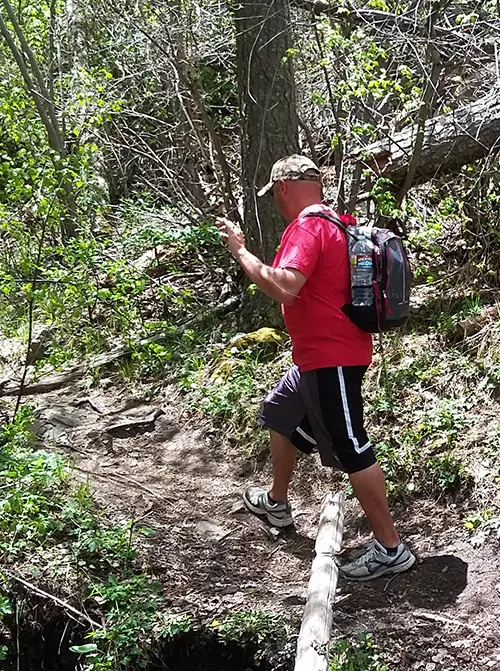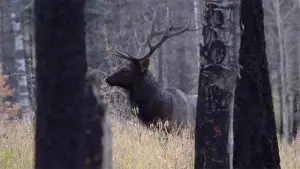
Elk hunting generally takes place in a high mountain environment and your physical fitness, or lack thereof, can often be a determining factor as to just how much you enjoy or suffer through your hunt.
When it comes to getting into elk country, there are 4×4’s, 4 wheelers, UTV’s, motorcycles, mountain bikes, horses or good old man power…hiking. And generally, unless you plan on hiking way back into wilderness or back country, getting into and out of locations to a starting point or base camp is not really that much of a problem if planned for correctly. But your success and overall hunting experience, especially when hunting elk, most often is directly related to your physical preparation.

Hunters successfully use several methods when hunting elk; calling, still hunting, spot and stalk, decoys and blinds. Which method or combination of methods, and to what extent a method is used, is often determined by your physical abilities. Those hunters that move well and are in good physical condition will have many more options available to them. Your goal should be to have as many options as possible.
Does that mean that a person limited physically will not be successful? Definitely not. It’s still hunting and you NEVER know what will happen. You can be in the best shape of your life, hunt hard all over the mountain, only to come back to camp and hear stories about a kill at a blind, on a water hole, or about the bull that ran in for over a half a mile and was killed right behind camp! It just means that you and your partners have more options and more area, or types of terrain available. It doesn’t guarantee success, but it can definitely help stack the deck in your favor.

So with that said, how do you get in shape for your hunt? Well I like to think about it like this; If you are one of those people that has set a goal to swim the English Channel, what should you do? Well, you had better start swimming!
So then, what is it you need to do if you plan on elk hunting? My friends, you had better start WALKING!
Flat, uphill, downhill, with a weighted pack, without weight, with weight in your hands. Your cardio and conditioning is a top priority. Elk hunting is a grueling and physically demanding activity. Don’t make the mistake of thinking that you can walk out of camp, blow an elk call and have a bull walk into your lap and it’s over. Like I said earlier, anything can happen, but trust me when I say that’s just not the case. It’s going to be a lot of miles, lots of chasing, lot’s of missed opportunities and blown setups.Then a lot more miles and chasing. Eight to fifteen miles a day of walking, hiking and chasing is not uncommon. In fact, for the successful hunter, it is more the rule. You might be able to punch paper with the best of them…but try to do it while you are gulping for oxygen!
With that said, Here are my recommendations: (This is a basic plan and will prepare you, but understand that there are way more intense training plans for those that want to be more advanced )
- If you are hunting in September, you need to start no later than July 1st, June 1st is preferable (Two to three months ahead) . There is no way to really get in shape 1 month before your hunt. You can “break” the body and hunting gear in, in that amount of time, but for the type of physical conditioning that you will be calling on day after day, you need more “money” in the bank.
- Daily walking is preferable, but every other day will do. Note..listen to your body, if you are experiencing pain or develop an injury, rest for a few days. If it seems out of place or more serious, see a doctor.
- Start with a mile a day and work up to three miles a day . If you are a runner and already doing mileage, you are doing fine. I still recommend walking and hiking some hills with a 30 lb. pack.
- Once you are up to 3 miles, alternate days with a 20 to 30 pound pack. Carrying hand weights is a great way to prep the shoulders for carrying a weapon (nothing huge, 3 to 5 lbs…even water bottles in both hand will work).
- If and when you are handling the 3 miles, you can always add some tougher cardio. We like to do something called “Telephone poles”. These are done on days WITHOUT weight or a pack.
- Using telephone poles spaced on the side of a road, preferably a dirt road if possible, you walk from the first pole to the next at which point you now jog from there to the next pole, then back to a walk and so on.
- Once you feel solid with the walk jog, the next step up is to move from the jog to a fast run…..then once that is good, to a sprint.
- The last step once you feel your body is up to the challenge is to vary the poles, walk-sprint….jog-sprint, jog-sprint, jog-sprint, walk-jog, walk-jog, jog-sprint, jog-sprint and so on.
- Cross training; biking, swimming laps, trail hikes and jogging, are great ways to vary your training and to give you a fresh change. I would recommend do these on your Pole days or on the “off” days for additional benefit.
I have also found that pushups along with body planks are the best all around exercises for general upper body and core strengthening and it doesn’t take a gym membership to get them done. The core strengthening will really help you through a long hunt with a pack and a weapon as well as for that pack out after you tag your elk this year!
Hope this helps. Look forward to seeing you on the mountain! Remember…..where there is a will, there is a way!




Good to see you following your own advice!
Yes sir! LOL. Keep up the work buddy…awesome!
Great advice!!! I try to climb every hill that I can on my walks…